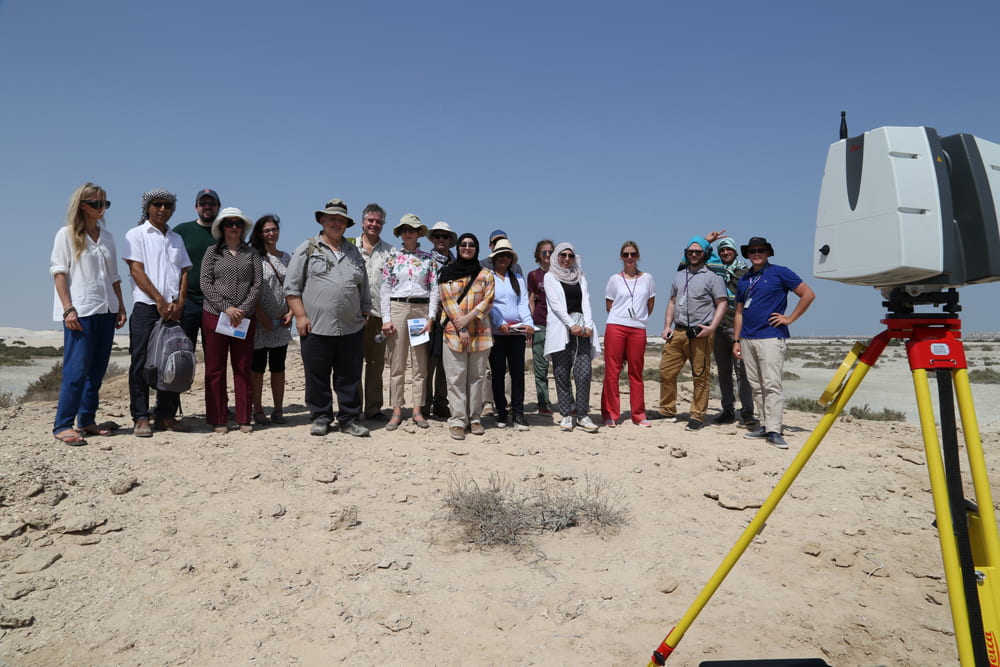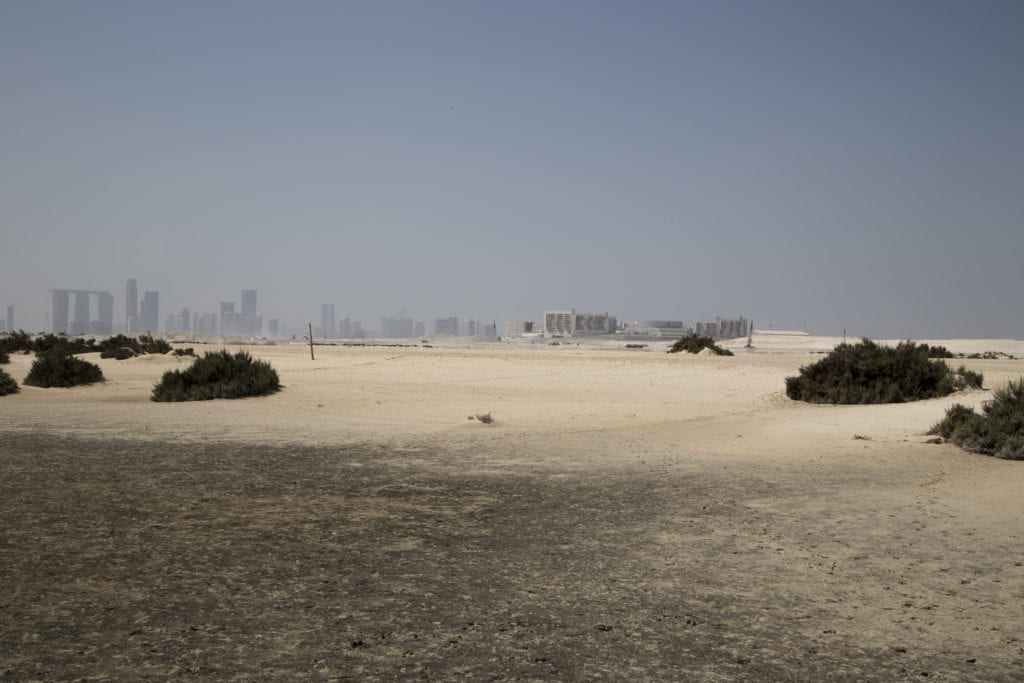“Heritage and national identity are closely connected. Throughout the past 45 years, the UAE has gone through very rapid changes and development. All the while, it has been very much engaged in bridging its past with its present and future.”
During the fall semester the CDS worked with Robert Parthesius, Visiting Professor of Heritage and Museum Studies and Director of the CIE Centre for International Heritage Activities, and Visiting Associate Professor of Digital Humanities, David Wrisley, to document an archeological site on Saadiyat Island. This event was part of the two-day “Dialogues with the Past: Documenting Heritage in the UAE” conference sponsored by the NYUAD Institute.
The CDS acted as an incubator for the project, working with the professors to create a data capture plan to document the site during the second day of the workshop titled “The Heritage Lab.” David and Robert approached the CDS to brainstorm ideas about how to use technology to enable conference participants to re-think ways in which heritage can be captured, preserved and documented. The goal was to help them envision methods for moving beyond traditional archaeological capture tools and practices using different forms of technology.
The Heritage Lab took place on the second day of the Institute event. Conference participants, who are all involved with various efforts around the region to document the area’s rich past, went out to Site A on Saadiyat Island, a historical heritage site with archeological ruins. CDS staff, along with David and Robert, guided participants on various forms of fieldwork using data capture tools, including video cameras, DSLR cameras, phone cameras and GPS apps. Participants returned to the CDS in the afternoon to download and store the various types of data they captured. CDS staff helped them interact with the data in various ways and ensured storage of everything captured. During the Lab, a local participant also told stories of visiting Saadiyat Island as a child and shared photos from his social media accounts that documented these visits, adding a personal dimension to the project.

The CDS will continue to work with this project during Spring 2017 to develop ways to make this information publically available and, in collaboration with David and Robert, to build upon the initial concept established during the Heritage Lab. Possible areas of exploration include working with Engineering faculty to develop a Memory Table that features images, video and data gathered during the fieldwork exercise.
As part of the visual documentation for the workshop Rebecca Pittam, Academic Technologist Specialist used a variety of different photographic methods to help capture the site. Photos were primarily taken using a Canon 6D DSLR camera, which has a built-in GPS receiver. The site, its surroundings, and individual objects of interest were captured. These photos were then shared with Matthew Sumner, Data Services Librarian, who was able to map them according to their GPS coordinates using ArcGIS.
[ngg_images source=”galleries” container_ids=”4″ display_type=”photocrati-nextgen_basic_thumbnails” override_thumbnail_settings=”0″ thumbnail_width=”120″ thumbnail_height=”90″ thumbnail_crop=”1″ images_per_page=”20″ number_of_columns=”0″ ajax_pagination=”0″ show_all_in_lightbox=”0″ use_imagebrowser_effect=”0″ show_slideshow_link=”1″ slideshow_link_text=”[Show slideshow]” order_by=”sortorder” order_direction=”ASC” returns=”included” maximum_entity_count=”500″]
Other methods used during the site visit consisted of creating 360 images using the Ricoh Theta camera which can be viewed online and explored through the Ricoh Theta viewer. Panoramic photos of the area were also taken using the Canon 6D and stitched together using Adobe Photoshop to create a large panoramic printed image.
In a time where the old is being replaced by the new and very few areas remain untouched in Abu Dhabi it was a great experience to hear about, explore and document a site that was once regularly occupied by locals in the not so distant past. Seeing the shells that were once used as a food supply and rocks that were used to make fires was a welcoming escape for the bustling city that you see in the horizon.

